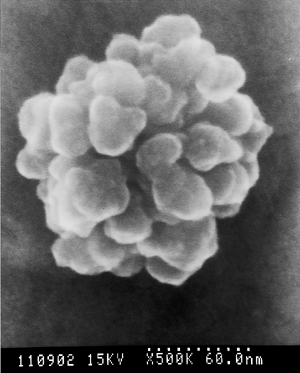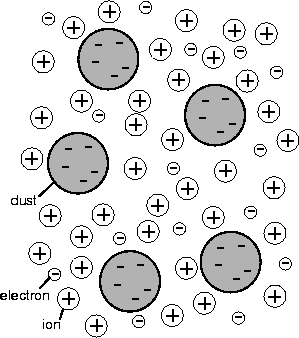

Neil Cramer and Sergey Vladimirov have found that waves in magnetized plasmas behave very differently when dust is present.
In a plasma which is threaded by a magnetic field, the field lines wiggle or twist if part of the plasma is displaced in some manner; these disturbances can propagate away from their origin, along the magnetic field lines, as ``Alfvén'' waves. The properties of Alfvén waves in ``ordinary'' plasmas have been thoroughly investigated and are well known. Understanding these properties is crucial in comprehending the behavior of any dynamic plasma, because the waves transport energy and momentum through the plasma and in this way communicate any applied forces. Neil Cramer and Sergey Vladimirov have investigated Alfvén wave behavior in dusty plasmas and they have uncovered some fundamental new results.
One particularly interesting feature is the discovery that low-frequency Alfvén waves can be efficiently absorbed in dusty plasmas. In the absence of dust, negatively charged electrons and positively charged protons generate equal and opposite electrical currents as low frequency waves pass by. However, dust grains are almost immobile (because they are exceedingly massive in comparison with electrons and protons) and a large proportion of the electrons reside on the dust grains, so in dusty plasmas there is an imbalance in the electrical currents generated by the passage of an Alfvén wave. The net current can then excite large oscillations in the magnetic field lines where the wave energy is dumped and the plasma is heated.
Thus in attempting to shove around a lump of dusty plasma, a lot of energy is dissipated as heat within the plasma where the Alfvén waves are absorbed. This property is especially important in understanding the collapse of dusty interstellar clouds into protostars Neil and Sergey's work leads us to expect quite rapid collapse as the applied gravitational forces are efficiently dissipated into heat.


Left: A micrograph of a typical plasma dust grain magnified 500 thousand times. Courtesy of Professor Yukio Watanabe, Kyushu U.
Right: Sketch of the constituents of a dusty plasma, showing the relative dearth of electrons which have been absorbed by the dust grains.
In reality the dust grains can be one billion times bigger than the ions, and the electrons are essentially point-like.